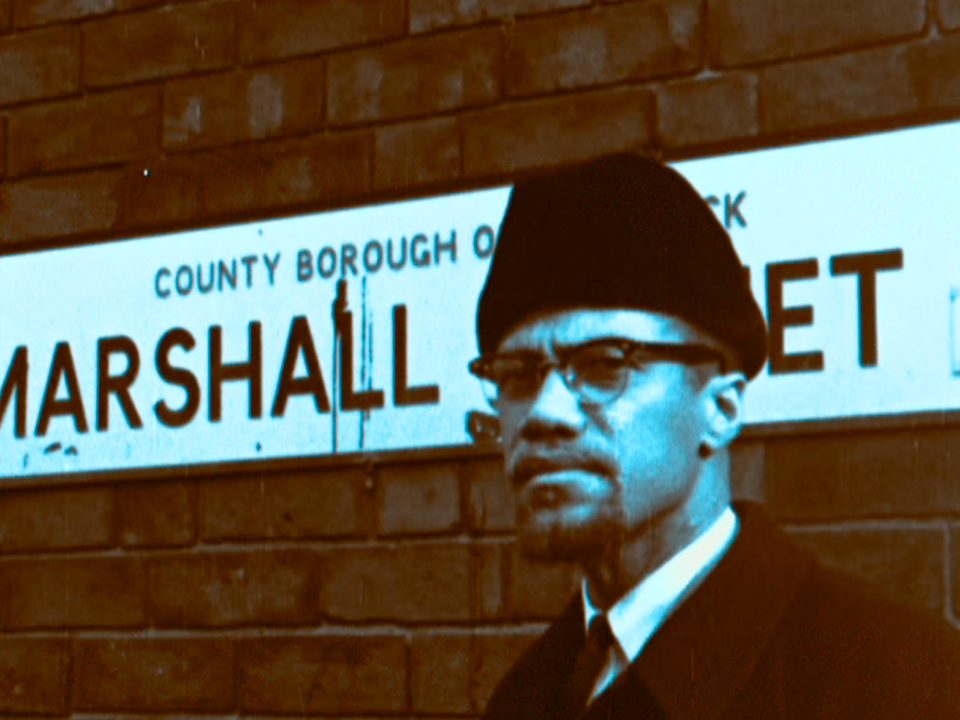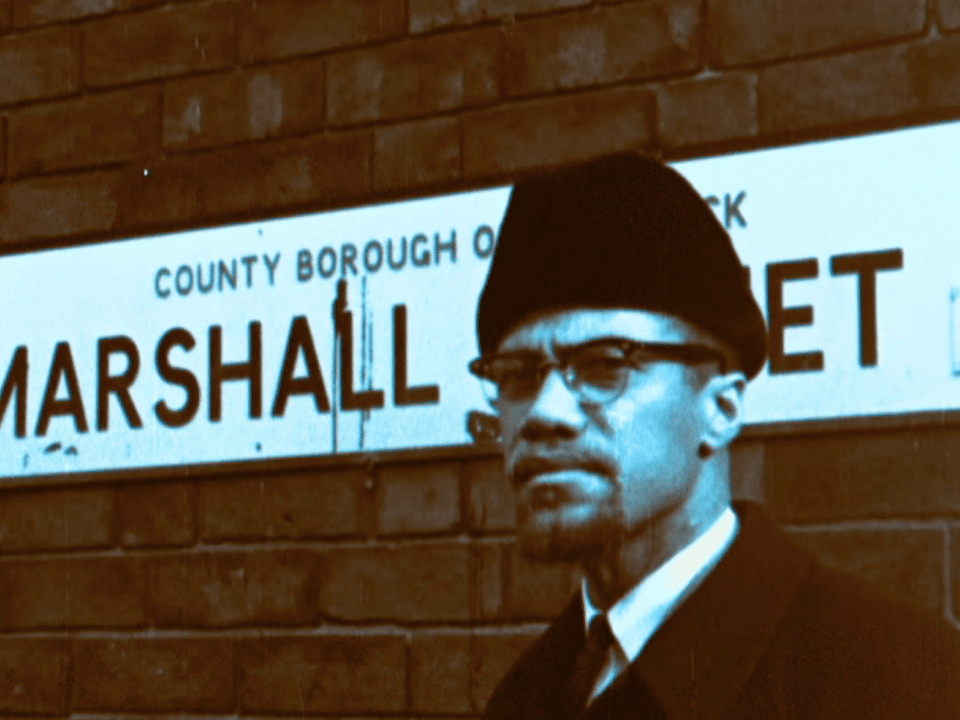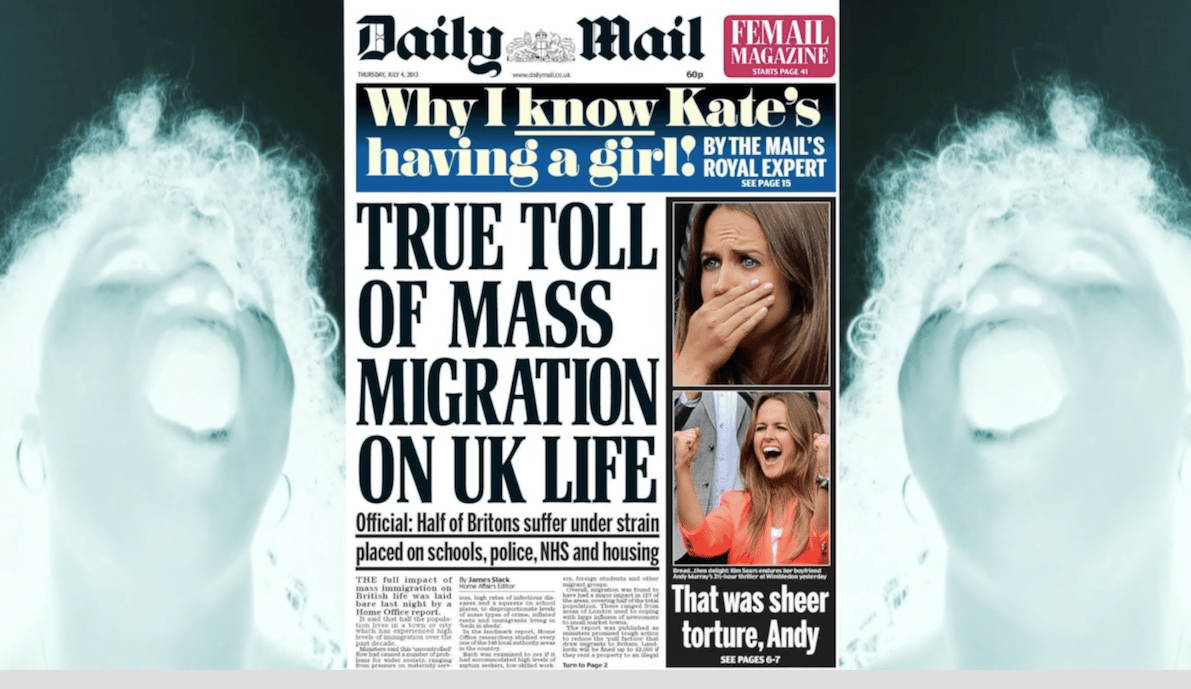
By Dr Ian Bethell-Bennett
The National Art Gallery of The Bahamas and LUX Scotland partnered with the British Council to produce a series of short and experimental films that coincides with the exhibition “We Suffer to Remain”. The series highlights a history of moving image expression of hard to have conversations about race, indigeneity and belonging. The first screening in this series was on Thursday evening 17th May in the amphitheatre of the NAGB. The theatre is a beautiful and incredibly well-done space allowing for the outdoors to be enjoyed, even with the threat of rain, which, fortunately, did not descend. A good sized and engaged crowd came to support this event, and different and distinct viewpoints and experiences enlivened the discussion. The films screened were Alberta Whittle’s Sorry, not sorry (2018), and Handsworth Songs (1986) by Black Audio Film Collective, a 16mm work transferred to video.

Black Audio Film Collective, Handsworth Songs, 1984. Image courtesy of the artist and LUX.
The evening began with a brief introduction to the films and the series by Nicole Yip curator of the series and director of LUX Scotland, NAGB Chief Curator Holly Bynoe and myself. The discussion set the scene for the artistic representation provided by these artists as well as opening the door to the discussion of moving image development in the Caribbean. It is significant that the Caribbean, a similar yet divided region through colonisation struggles with the infrastructure to support film production which continues to be uneven. The Bahamas has not been known for moving image production–though this is changing with creators like Kareem Mortimer and Maria Govan and others–when compared to Cuba the giant in the region for producing long and short moving images using multiple strategies and techniques of directing and production. Perhaps one of the most renowned directors in Cuba was Tomás Gutiérrez Alea whose work, especially Fresa y Chocolate (1993) was picked up by mainstream American film festival culture. Also, Euzhan Palcy, Martinique-born producer of Joseph Zobel’s La Rue Cases Nègres/Sugar Cane Alley, (novel 1950; film 1983), directs the gaze or the view of people differently from the Hollywood angle that tends to imbricate Caribbean folk in a particular way.
Film can direct the eye in exciting ways, and much of it comes from camera angles and then editing compounds it. Editing, as is the case with the montage of distinct, sometimes clashing, sometimes resonant images, collided with sound that works together to tell a story is a unique way to influence the outcome. In writing, for example, much is left up to either linear narrative or nonlinear narrative. In writing, Virginia Woolf’s Mrs Dalloway (1925) or The Waves (1931) are all experimental and non-linear, as much as Dickensian novels always tended to be linear with misogyny folded into the narrative as is detected in Great Expectations (1861), yet today, we want entertainment over reality. However, reality TV is always entertaining in its heavily scripted and non-real unreality, and the narratives of unsettling hard stories are less real because we have entered the age of alternative facts.
This film series is not about mindless or straightforward entertainment as so much of today’s moving image is meant to be. The American preoccupation with encouraging a particular worldview found its way into the media in films like The Quiet American (1958), where Hollywood deployed many and various strategies to convince viewers of US superiority over the so-called tropics where dictatorships commonly rule and communism creates awful and horrendous realities. The art of film allows one to be cultivated into a particular mindset, as seen with The Quiet American that became one in a long list of American foreign policy deployment strategies that paint an image of those places as inferior and unstable.
The moving image may not be as popular or as easily accessible in the Caribbean, or at least in the Anglophone region, as it is in other parts, as it is in Britain or the USA, but it is changing, and film is allowing more and more discussion of mechanisms and policies used to create other versions and alternative facts. Film offers the ability to challenge racist and problematic imagery because it presents discordant ideas and images of the Caribbean, racism, black potential and possibility. Keith Piper’s Go West Young Man (1987) is a short film examines the stereotyping of black masculinity and the inherent and intrinsic racism and inferiority cast on that idea/concept, as black men are either athletes or studs, yet we do not discuss such things in polite company.

Alberta Whittle, Sorry, not sorry, 2018. Image courtesy of the artist.
Those other spaces are usually only ever spoken over, sub-texted or silenced completely, as well as being relegated to the role of silent subaltern (Spivak 1988) but the other spaces have had the chance with the moving image being liberated from prohibitively costly creativity to a more general public where versions and stories could be told that had remained silent and silenced. Karen Marks Mafundikwa’s documentary The Price of Memory (2014)–screened at the Island House film festival 2018– does just that and challenges with the other story, not often seen in the idyllic imaginings of civility culled from novels of that age where the colonies were places of disease and temptation or even evil, as depicted in Mansfield Park (1814). All these experimental and short-run or long run films often nonlinear from non-mainstream, creatives are the version omitted from the main text. The fracturing of space, time, place and narrative through the collapsing of various temporalities and stories that coincide but may not be seen in the same space/context, montage tells stories that otherwise lie silent in the vaults of history.
Handsworth Songs provokes disquiet though it does not do so aggressively. Whittle’s Sorry, not sorry (2018), is less subtle in the ways it slaps one in the face with history and reality. Much like Louis Henderson’s The Sea as History (2016), taken from the title of a Derek Walcott poem these other films have astute and astonishing stories to tell all on their own. We merely need to listen, watch, feel and be angered by. Maryse Condé writes the job of the writer is to displease, while Edwidge Danticat argues that artists and filmmakers must create dangerously. As survivors of the largest and longest holocaust–though the name be reserved for the Jewish experience in Nazi Germany–Black people must speak up, shout, and of that fails create dangerously so that our stories are not forgotten; the Jewish community in and out of exile insists that their Holocaust never, ever, ever be forgotten and they do this through telling their story. Schindler’s List (1993) is a side of their story, but there are many others, and they are regularly told. Why do Blacks and the descendants of former enslaved Africans and colonialism—a hostile and divisive system— tell their stories so reluctantly?